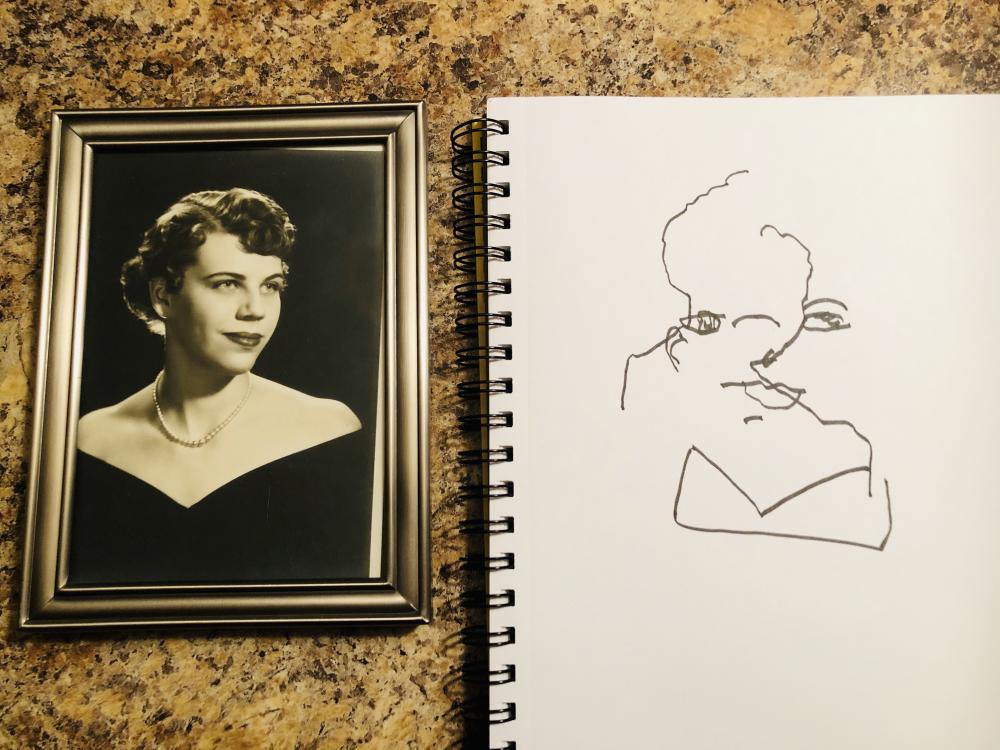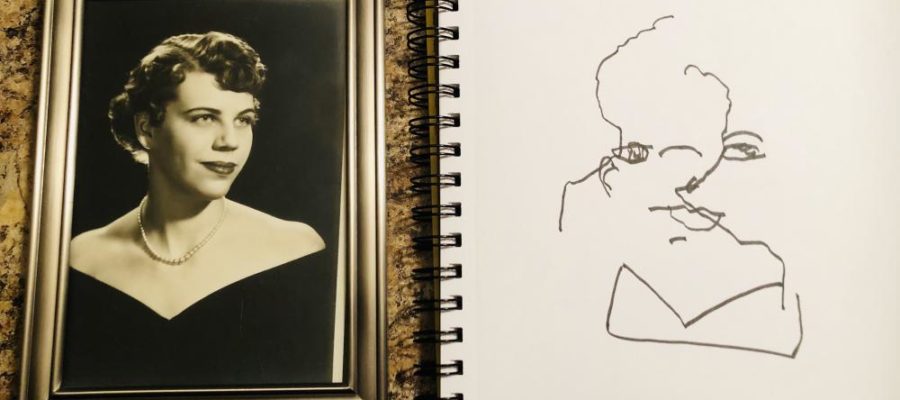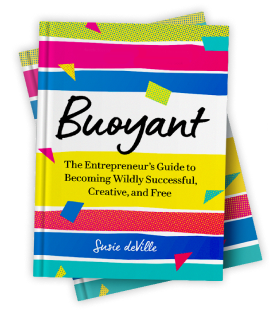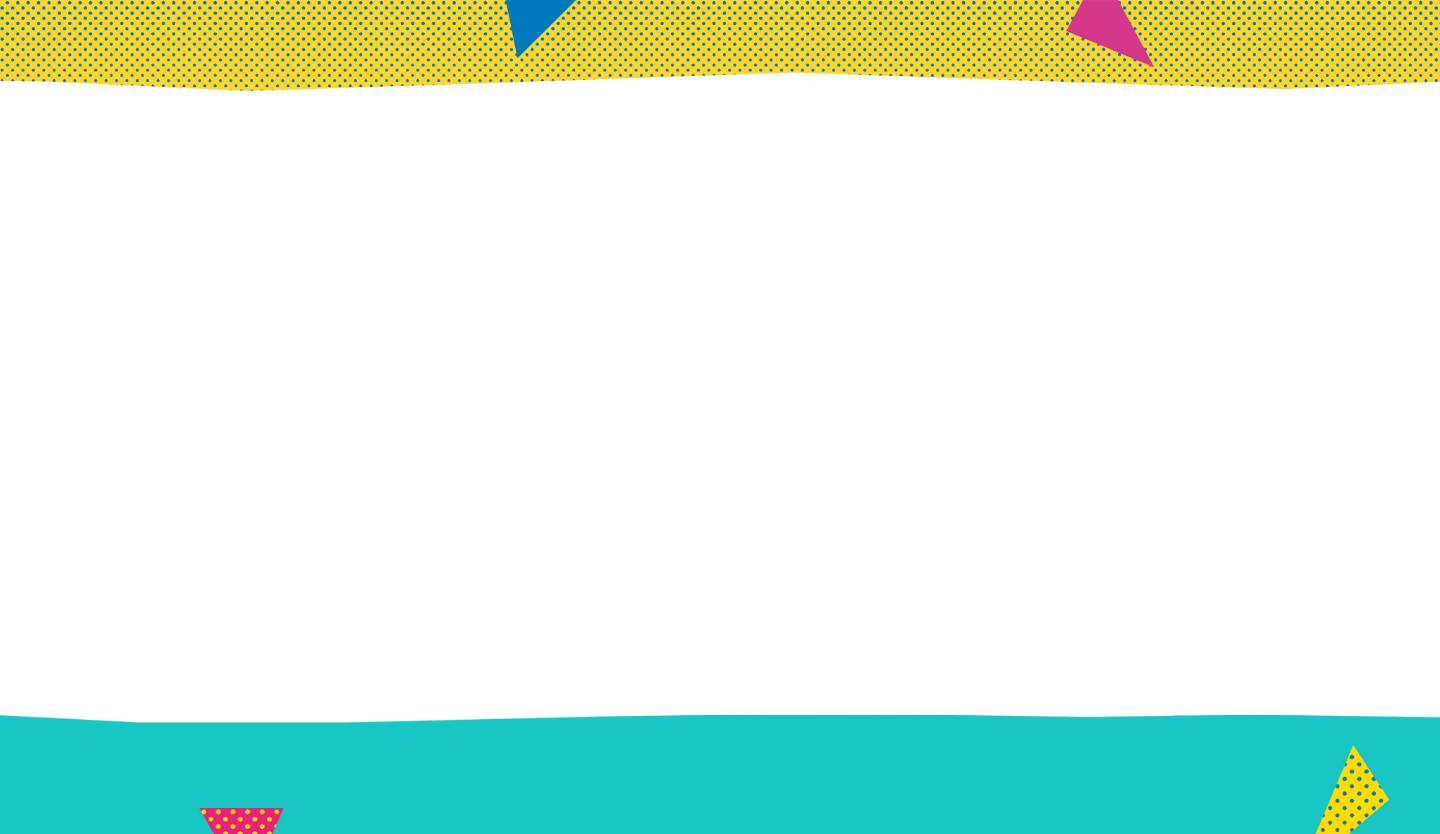If you want to know how to develop your intuition and find more clarity in uncertain times, the trick is to get into a state of flow. Drawing is one way to do that.
“Inside you there is an artist you don’t know about … Say yes quickly, if you know, if you’ve known it from before the beginning of the universe.” ~ Rumi
I went out for a long walk yesterday and chose to listen to Tim Ferriss’ most recent podcast along the way. Tim was drinking wine with his buddy, Kevin Rose, and chatting about favorite books and wines, dog adoption, and life during quarantine.
At one point, Tim revealed he had lost something like 15 pounds over the last month because he was forgetting to eat. Kevin asked Tim what was bothering him given that he was financially secure, had tons of food and other supplies, and was holed up in comfort.
Tim replied that he wasn’t exactly sure what it was, but that the heightened fear and uncertainty of now “brings to the forefront whatever it is that you haven’t dealt with. Whatever it is you haven’t processed.”
The Aimlessness of Uncertainty
We entrepreneurs and creators know that icky feeling all too well—quarantine or not.
To be sure, fear and uncertainty (and their offspring, lack of focus and a scramble to find order in chaos), can have us in their grip in the best of times when we are creating and/or running our businesses.
Now, those waves are coming at us with a force and relentless repetition we may not have ever experienced or successfully weathered. We are raw, exposed in the elements, taking salt water right up the nose. We are waiting for daylight, for the clouds to take leave of the horizon, and for the seas to calm.
But like in some alternative Groundhog Day Universe, the waves keep coming, reminding us that we have to find equilibrium without external circumstances providing our balance. That is, we have to create our own eye in the center of the storm.
We always have to right ourselves after a capsize—that’s not new. What is new is that our protective armor is rusting and falling away as we’ve lost our go-to distracting behaviors and anchors of self identity.
The stuff that we have used to file down our pointy edges—our daily routines, ways of being in the world, and checkpoints of I’m OK—are no longer available to us.
How do we, then, reduce the tumult in our collective worlds?
How to Develop Your Intuition and Find Your Way
You may be thinking I’m going to pitch meditation, walking in fresh air, cooking a healthy meal, or journaling. While all of those activities are wonderful antidotes to stress and overwhelm, I’d like to present you with a healing practice and a method for how to develop your intuition that may surprise you with its simplicity and magical powers: blind contour drawing.
I know, I know. Stay with me.
Blind contour drawing is simply drawing something without looking down at your paper. All one needs to get going is a pen, paper, and a subject to draw. The trick—the power—of blind contour drawing is that by focusing entirely on our subject, we flip a switch in our brain and are transported from a state of distraction/fear/perfectionism/desire to control to one of presence/flow/possibility/power.
Sam Anderson, in his New York Times Magazine article, describes blind contour drawing this way:
“The goal of blind drawing is to really see the thing you’re looking at, to almost spiritually merge with it, rather than retreat into your mental image of it. Our brains are designed to simplify — to reduce the tumult of the world into order. Blind drawing trains us to stare at the chaos, to honor it. It is an act of meditation, as much as it is an artistic practice — a gateway to pure being. It forces us to study the world as it actually is.
Part of the magic of blind drawing is the impossibility of doing it wrong. This makes it the perfect antidote to perfectionism, because its first and only step is to abandon any hope of perfection. But inevitably, almost by accident, your hand will produce little slivers of excellence — a nose that looks exactly right, an inscrutable expression on someone’s face, the dip and curve of a dog’s back — but then these will be obliterated, immediately, by the subsequent maelstrom of lines. I have learned to enjoy the feeling of swimming in sensory ignorance, to appreciate the vast distance between my hand and the reality it tries to trace.
It turns out that the world, on close examination, is gloriously strange. Things are lumpier and hairier than we have been led to believe. Every object (book, pencil, glove, banana) is in fact a bewildering universe of lines. Blind drawing allows us to explore those universes, to lose ourselves in them for long stretches of time, to feel their essential strangeness. It is joyful and meditative, one of the fastest escape routes from the prison of consciousness that I have ever found. You can do it anywhere, anytime, with any subject.”
This is my first blind contour drawing, using a picture of my beautiful mom as my subject.

As you can see in the picture above, blind contour drawing is not about making art or focusing on the end result (although, I do love the energy and interesting elements these drawings possess). It is about the experience.
It is about letting ourselves get lost on purpose and discovering that that is the best way to find our way in uncertain times.
Blind contour drawing is a way for us to travel without leaving our seat. It is a way to connect us to the most resonant parts of our intuition and clarity. It is how to how to develop your intuition and clarity—by letting go.
We actually already know how to get ourselves back on our feet. We just need to remember. It is all there, waiting for us.










